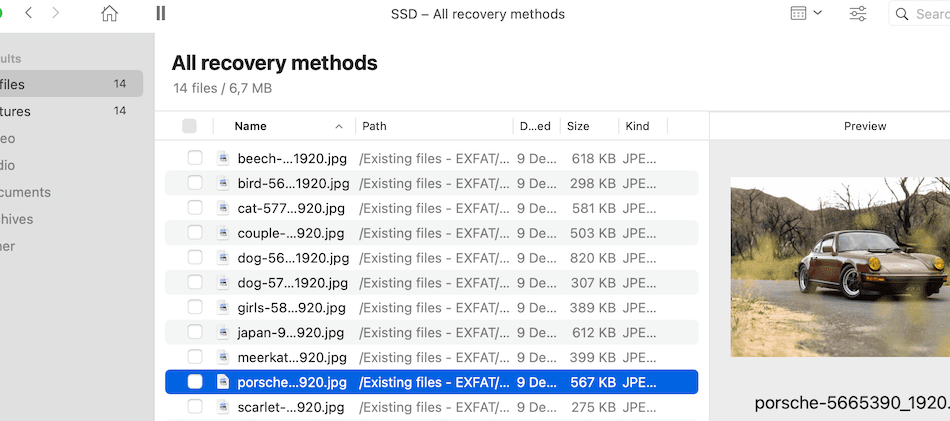There will always be a point in your life when you lose an important file that you badly need. Retrieving corrupted or lost data from different storage devices such as hard disks and flash drives can be tedious. Mac users must invest in high-performance data recovery software to prevent the hassle of retrieving deleted data. This article compiles the top 5 data recovery tools for Mac to help you recollect your files seamlessly.
Comparison of the Best Data Recovery Software for Mac
Mac devices are widely known as one of the most reliable computers in the market. As a result, the instances of corrupted files are rare. On such occasions, users would opt for data recovery tools that perform the job while giving them the most value. That said, here’s a direct comparison of the top data recovery tools for Mac:
| Data Recovery Tool for Mac | Supported File Types | File System | Price |
| Disk Drill | Documents, videos, archives, music, or photos | FAT, NTFS, HFS+, EXT4. |
|
| TestDisk | Documents, videos, archives, music, or photos | NTFS, FAT32, FAT12, FAT16, ext2/ext3, HFS+ | Open-Source, Free |
| StellarPhoenix | Photos, videos, audio files, contacts, messages, calendar, and call history | NTFS, FAT, FAT16, FAT32, and exFAT HFS, HFS+, and APFS. |
|
| PhotoRec | Videos, archives, documents, & lost pictures from a digital camera | FAT, NTFS, exFAT, ext2/ext3/ext4 file system, and HFS+ | Open-Source, Free |
| DataRescue | Photos, archives, movies, mail, text, audio, documents | FAT, exFAT, NTFS, and xt2/ext3/ext4 file |
|
1. Disk Drill
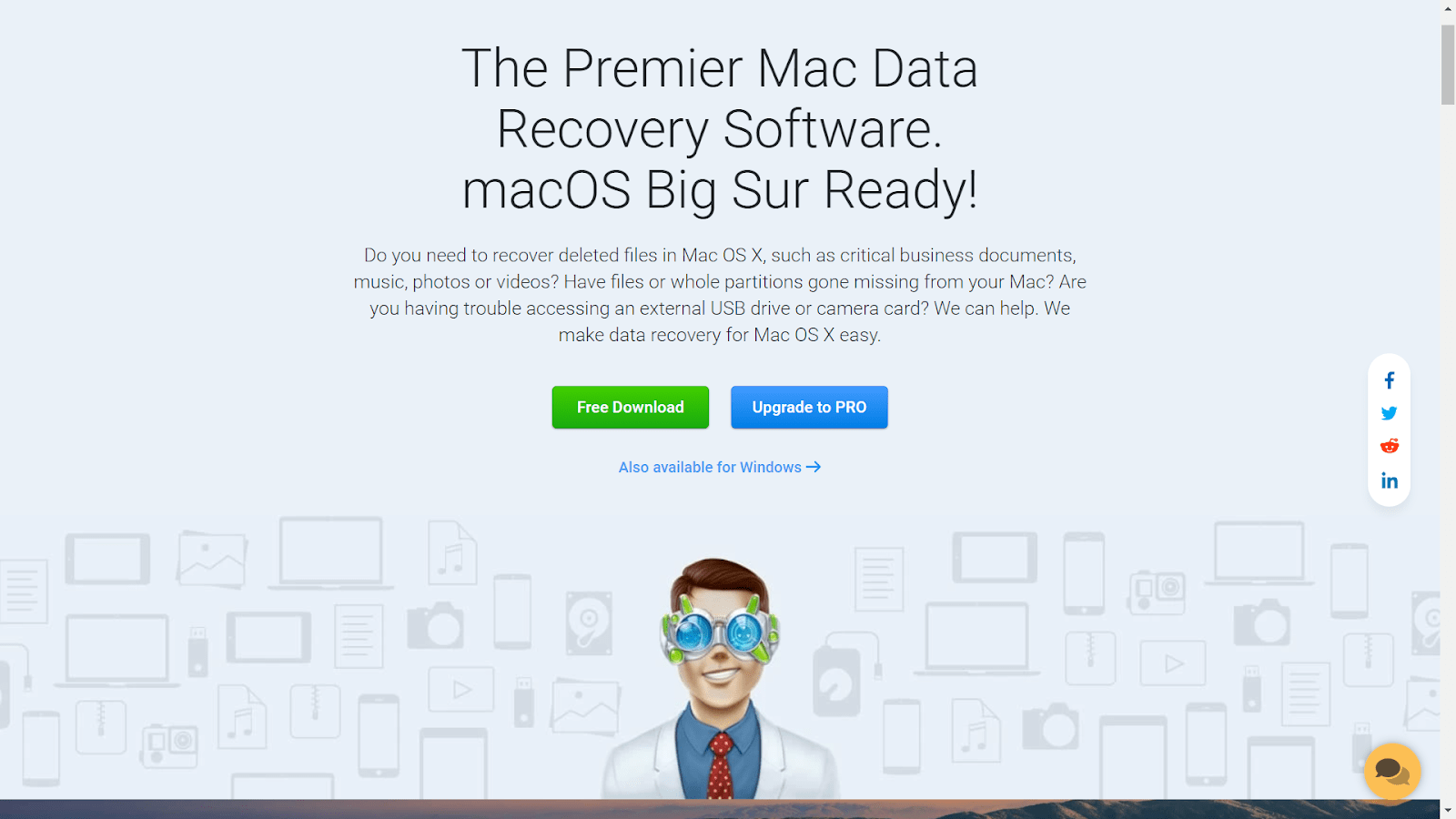
The latest version of Disk Drill is Disk Drill 4. It is one of the most renowned data recovery tools for Mac and Windows devices. Offering a sleek and smooth user interface, anyone can get access to its professional data recovery functionalities. It has considerably less cluttered hiding system partitions to prevent confusion and accommodate non-tech users.

Pros
As mentioned, Disk Drill 4 offers comprehensive features that cater to different types of Mac users. Whether you are a beginner or a tech expert, you can take advantage of its simplified functionalities. Users can initiate the data recovery with just a few clicks allowing them to take the process into their own hands. There are two methods on how you can recover your files using Disk Drill:
- Quick Scan
Initiating a Quick Scan allows users to conjugate the data on your hard drive and compare them with an expansive file header database. This process enables users to recover large-scale data in a matter of seconds.
- Deep Scan
Although Deep Scan can take more time to complete, it performs a more intensive scan. This option allows you to retrieve data that the Quick Scan feature might have missed.
Moreover, you can retrieve more than 400 file formats supported by file systems, including HFS/HFS+, APFS, FAT/exFAT, NTFS, and EXT3/EXT4. Users can take advantage of the rich, built-in features such as Disk Health, Mac Cleanup, Duplicate Finder, Recovery Drive, Data Protection, and Data Backup. Without having to pay extra fees, you can organize file retrieval and maximize data protection. A majority of Disk Drill users have also found the preview features helpful. Before recovering data, you can preview photos, videos, audios, and other documents to verify their quality.

Cons
Although you can evaluate the extent of data recovery your device requires, the process of retrieving your files require a fee. Users who have installed the latest Disk Drill version can utilize its essential features and opt for the free trial version. This system is beneficial for those who want to test the waters before making a valuable investment. Otherwise, you can pick up the Pro version for prices starting at $89. The Disk Drill Pro version leverage advanced algorithms to recover all your files as quickly as possible. This subscription can already benefit up to three Mac computers.
Overall, Disk Drill 4 is perfect for both personal and commercial use with its flexible pricing models. It is also equipped with expansive features to ensure that your files are restorable with the shortest downtime possible. More importantly, its simplistic user interface allows beginners to navigate through the app without getting lost with all the technical functionalities.
2. TestDisk
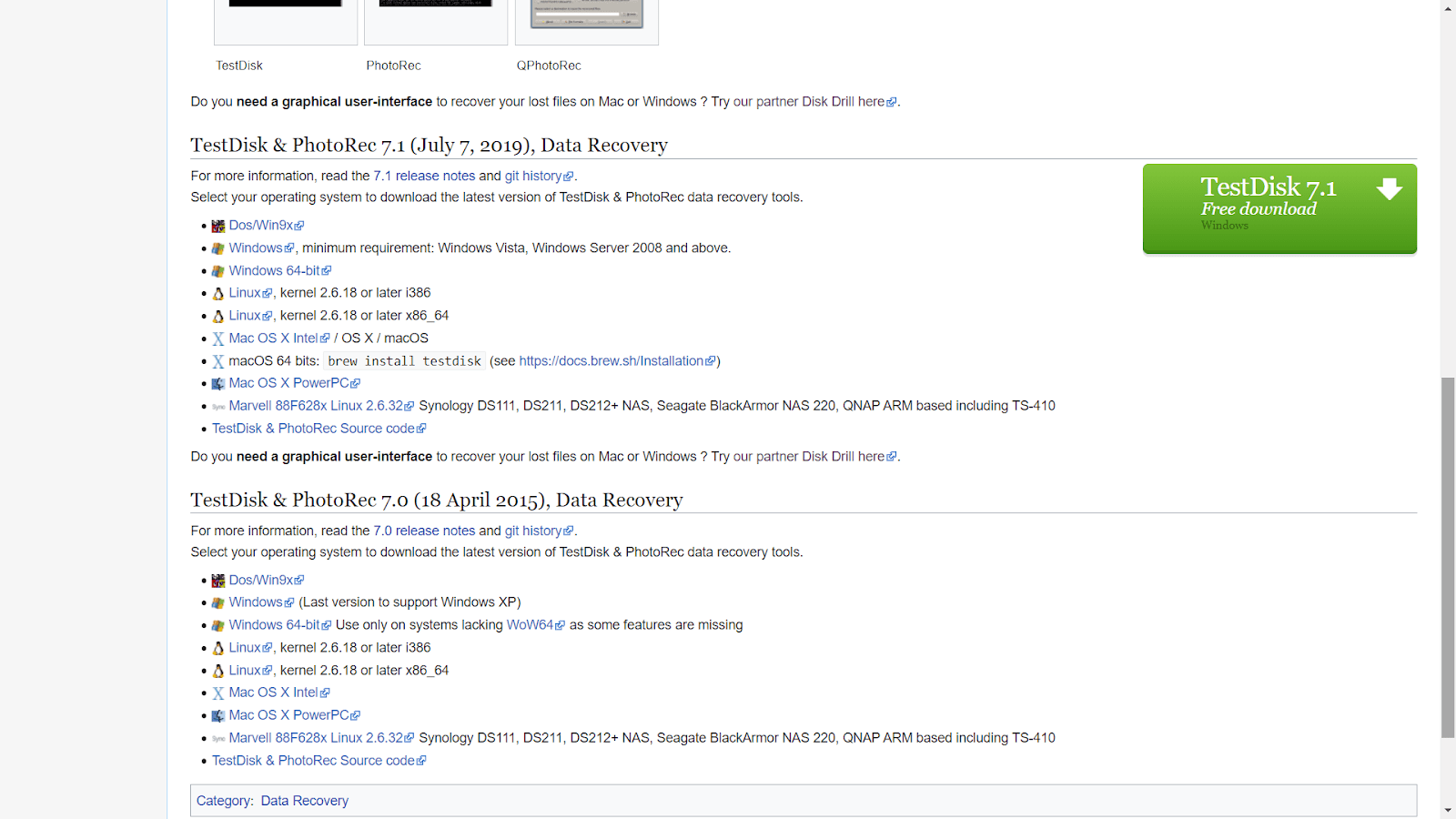
TestDisk is the go-to software for Mac users looking for free options. It will recover both lost partitions and missing hard drive volumes no longer in your Mac system. In other words, this tool allows you to make your storage devices bootable again. Whether you have accidentally deleted your files or corrupted your data, TestDisk is an excellent option for Mac users.

Pros
TestDisk is open-source and free for all Mac and Windows users. This benefit means that you can take advantage of all of its features for personal or commercial purposes. However, you can get the TestDisk lifetime license for $118.

Cons
Although TestDisk can accommodate both technical experts and novices, its Graphical User Interface gets reduced. With fewer symbols and visual metaphors to help users navigate the software, professionals may feel more comfortable with it than the latter.
3. StellarPhoenix
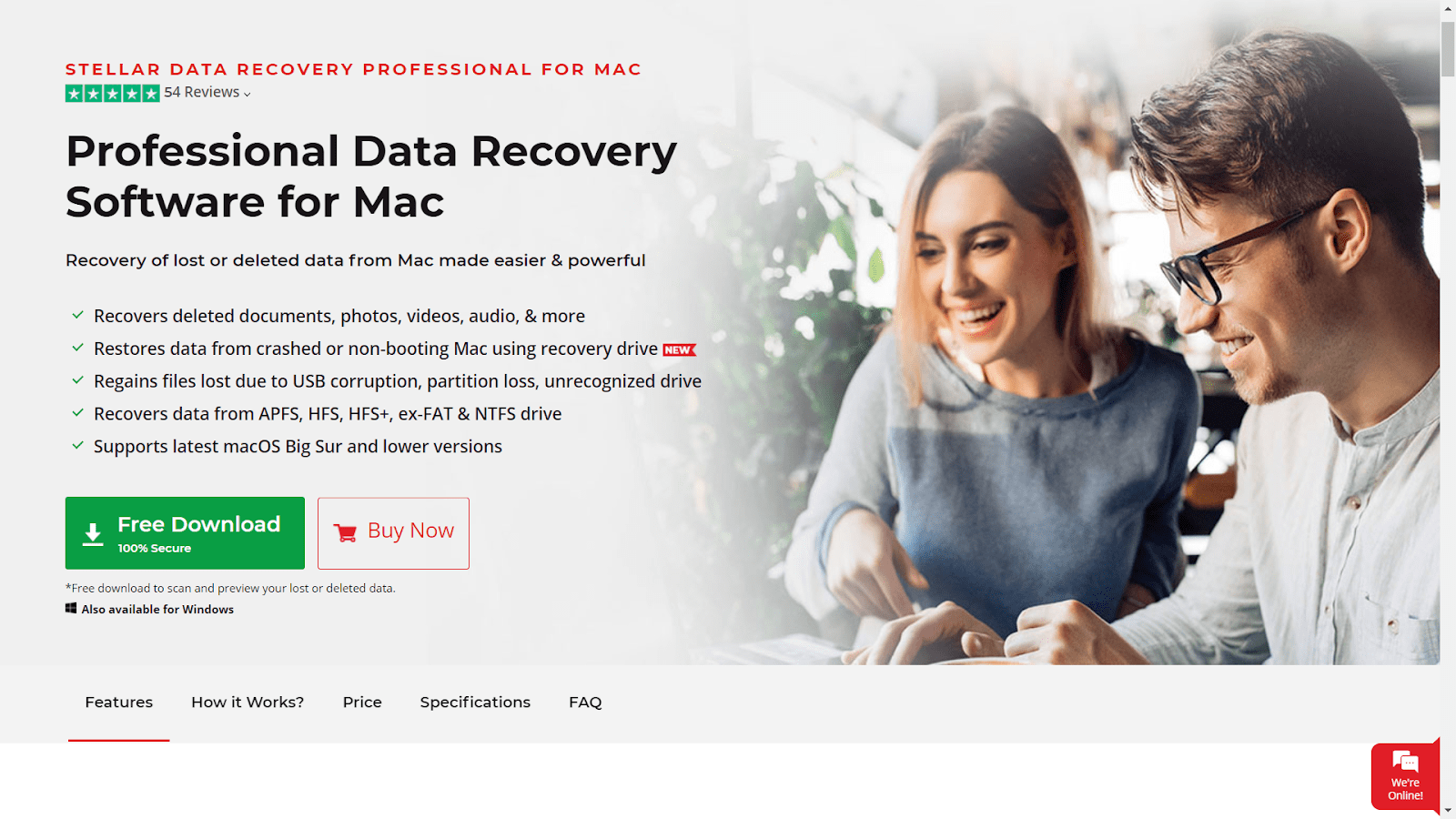
Data recovery has been made simple with StellarPhoenix for Mac. This software allows you to efficiently restore data from inaccessible, damaged, or formatted file systems. Although you can find lost files in a short amount of time, the capability of viewing them is limited. The price point for complete data recovery starts at $79.99 per year.

Pros
A demo version of the application allows users to look at the files that they can recover. Not only can it set their expectations, but it also prepares them for the value they will receive. They can always opt-out if the data recovery software failed to retrieve the file they wish to restore.

Cons
Previous users of the free trial version have reported crashes and lagging while navigating around the preview tool. On top of that, the preview function limits the size of the files you can view to less than 10 MB. This issue makes it difficult to get a full report of the files you can recover at a given time.
4. PhotoRec
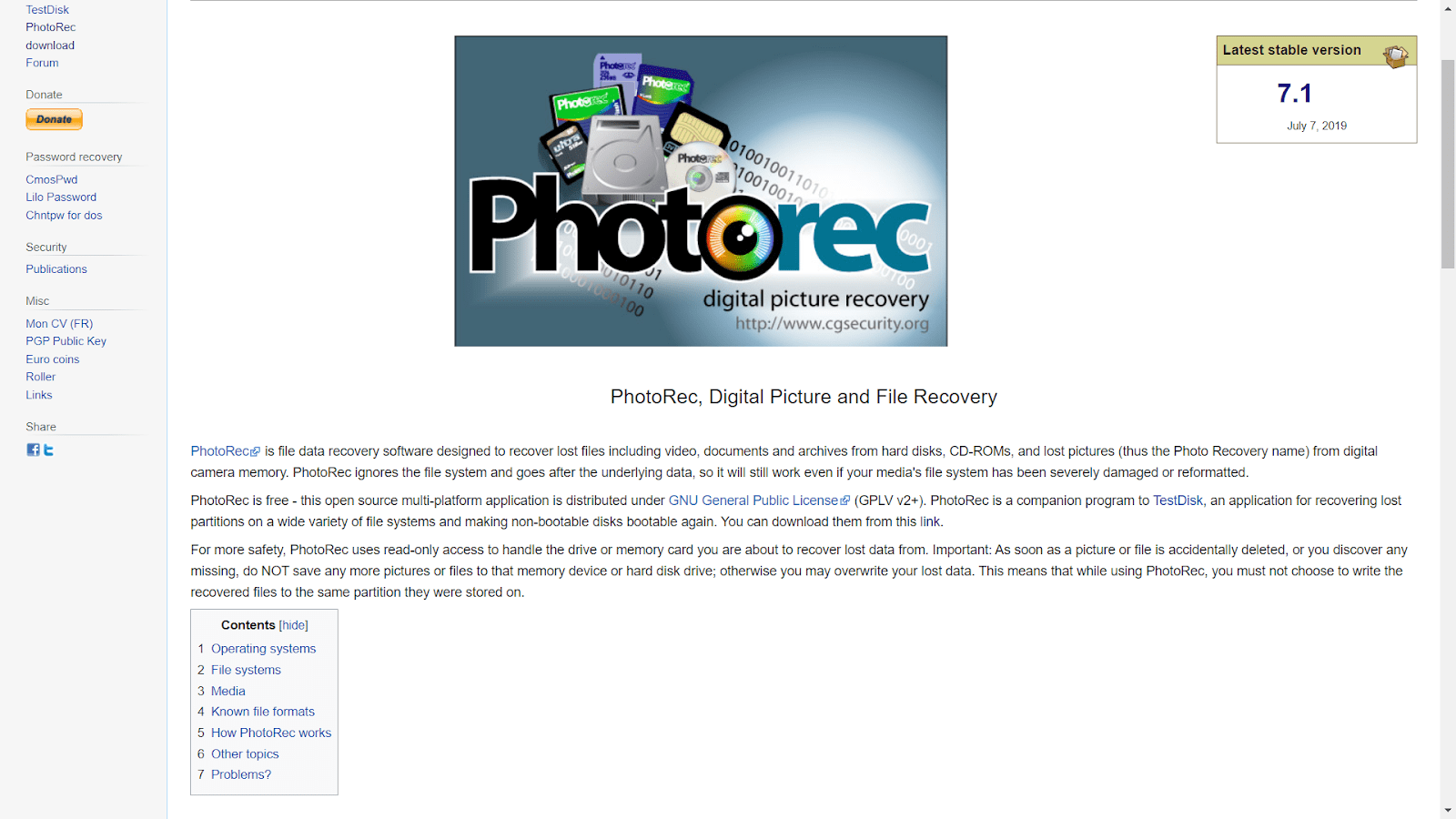
PhotoRec is popular for personal use and small businesses since it is both open source and free-to-use. It has been the standard for retrieving photos, videos, audio, and documents from hard drives, Mac devices, and various storage devices over the years.

Pros
Since PhotoRec is open source, contributing developers took advantage of this feature to expand the tool’s capabilities. Although the data recovery software lacks a graphical user interface, they utilized this shortcoming to their advantage. Its simplistic interface allowed them to port the application across the different operating systems, including Mac OS X, Windows, Linux, *BSD, and even Sun Solaris.
In contrast to its name, PhotoRec is not exclusive for recovering digital media. The data recovery application supports over 480 file extensions making it one of the most flexible software for Mac devices.

Cons
As mentioned, PhotoRec lacks a graphical user interface and can be an obstacle for less experienced users. However, you can leverage its seamless command-line interface as a compromise.
5. DataRescue
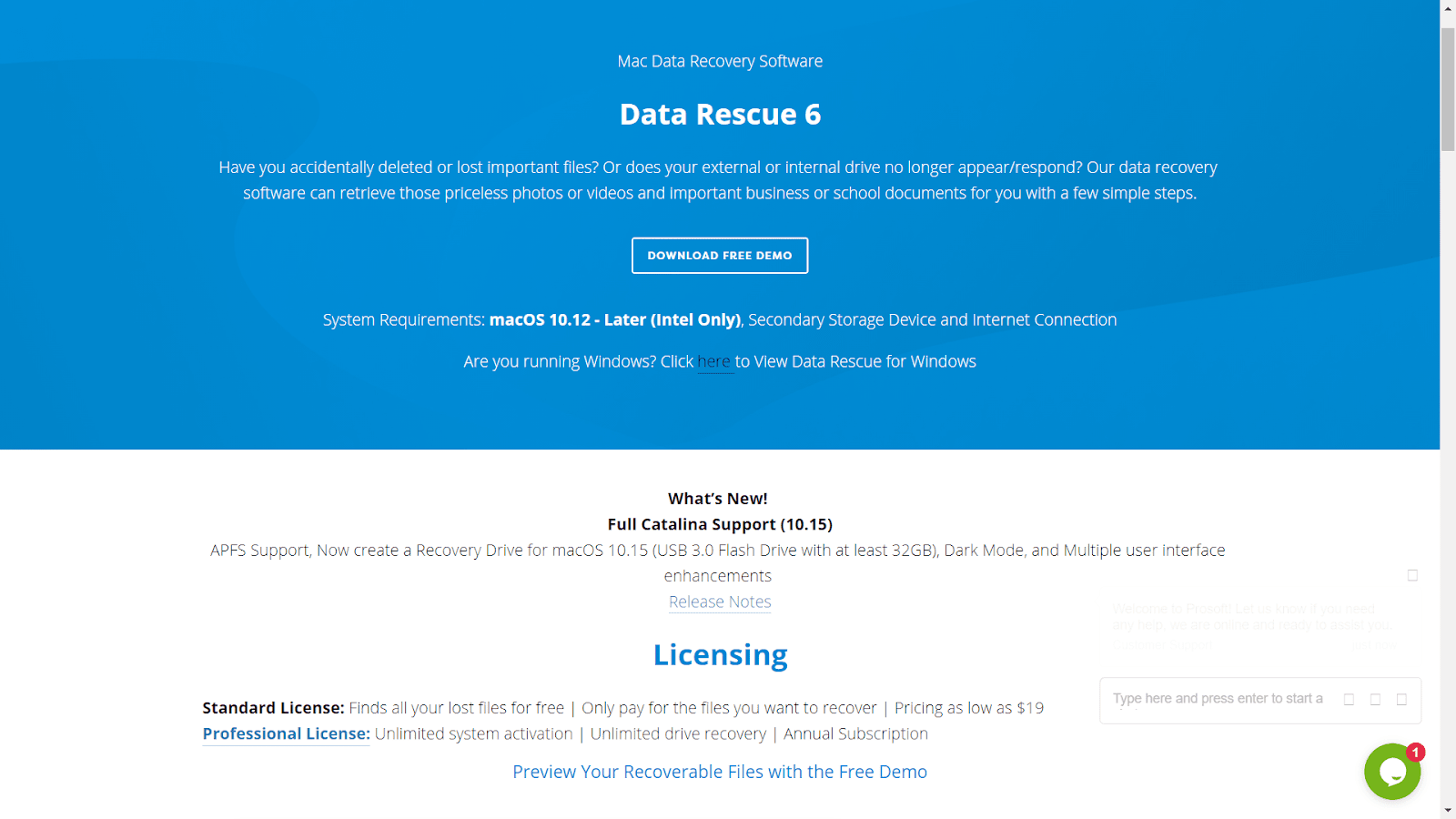
Data Rescue is one of the most reliable data recovery software suitable for Mac OS X 10.10 or later versions. It aims to restore your missing or corrupted data from your hard drives and external drives.

Pros
You can initiate data recovery with just a few clicks. All you need to do is to select the storage device from which you wish to retrieve files. You will also need to choose the most suitable file format for the recovered files. DataRescue will commence either a Quick Scan for recovering files that have failed to be mounted or a Deep Scan for retrieving erased data.
It also has the following pros:
- Seamless activation and installation process
- Sleek and professional user interface ideal for businesses and commercial use
- Offers Secure Erase, which allows mass deletion of files without compromising data protection
- A large number of configuration options
- Efficient Recovery Performance
- Comprehensive and meticulous scanning capabilities

Cons
- Cannot Pause/ Resume from your scanned progress
- Scanning takes a long time for deep scans and large-scale data.
Overall, customers can choose different pricing models depending on their budget and needs. The prices start at $99, and the paid versions divide into two types. The first one being the Standard license, which caters to one system and five drives. The Professional license, on the other hand, offers unlimited activation and data recovery.
Final Takeaway
The most outstanding data recovery software for Mac devices offer a myriad of features that provide users with data recovery benefits. Before you invest in a particular tool, it is essential to choose one that fulfills your needs and growing demands. Focus on a data recovery tool that addresses your present and potential problems to come. If the budget is crucial for you, it might be worth looking at free-to-use and open source applications. Either way, take into consideration all the pros and cons when making a deliberation. This option allows you to develop software that helps you achieve the value you desire. Overall, the key to a successful, informed decision is proactive drive monitoring, market research, and prioritizing features that cater to your needs.
